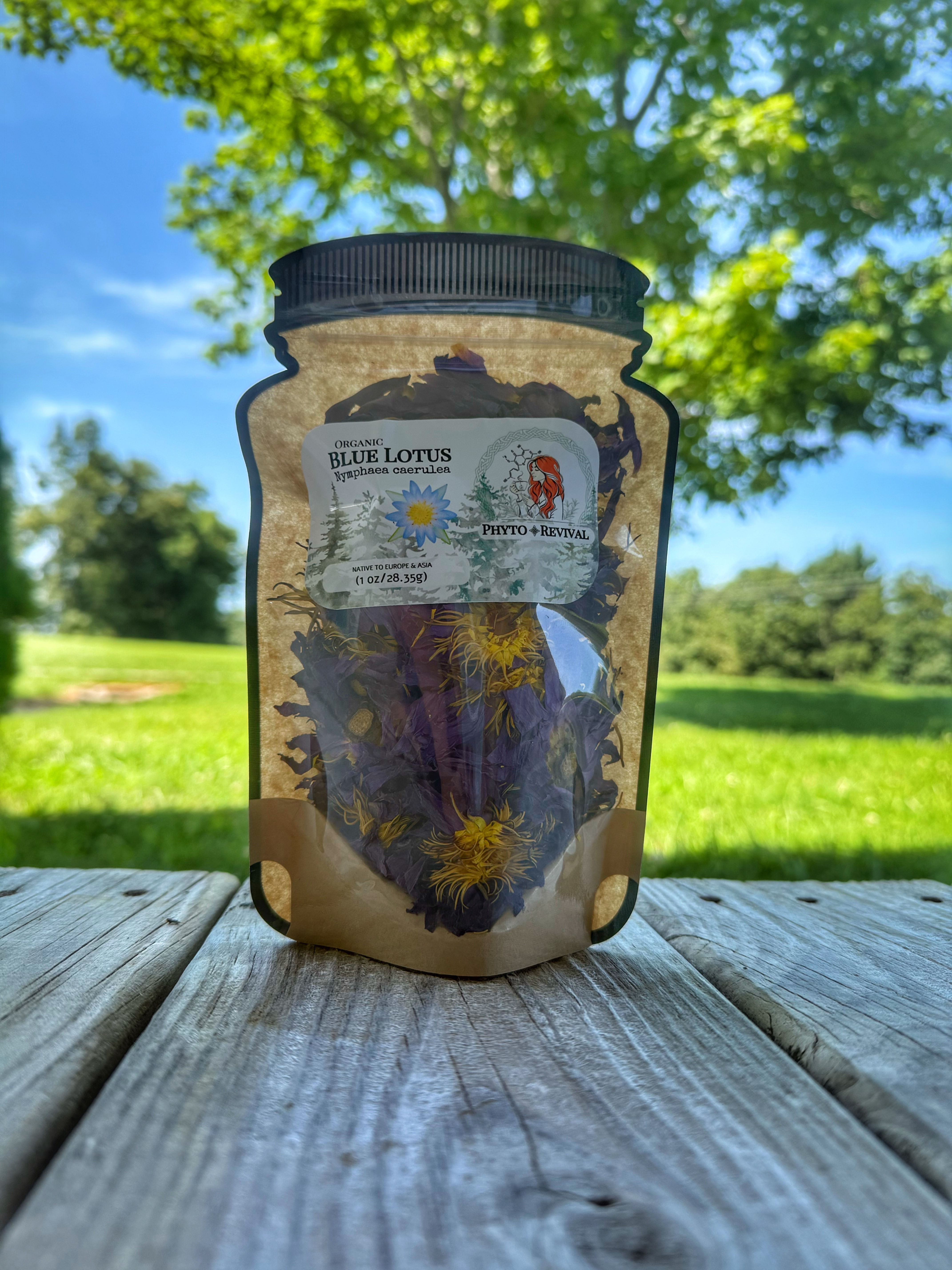Latin Binomial: Nymphaea caerulea
Common Names: Blue Lotus, Sacres Vluw Lily, Egyptian Lotus.
Botanical Family: Nymphaeaceae (Water Lily Family)
Blue Lotus is an aquatic perennial with striking blue-violet flowers and floating rounded leaves. Native to the Nile River and other parts of East Africa, it has been revered since ancient times, especially in Egyptian culture, for its beauty and psychoactive properties.
Blue Lotus (Nymphaea caerulea) is a sacred aquatic flower historically prized for is calming, euphoric, and mildly psychoactive properties. While gentle for most people. It should be used responsibly and avoided during pregnancy or with other sedatives or psychiatric medications. Its mystical reputation is grounded in centuries of spiritual and sensual use, particularly in Egypt, where it symbolized illumination and transcendence.
Therapeutic Actions & properties:
- Nervine (Calms the nervous system; promotes relaxation)
- Mild aphrodisiac (Traditionally used to enhanced sensuality and intimacy.)
- Anxiolytic: (May reduce anxiety and uplift mood)
- Mild Sedative: (Promates a gentle state of drowsiness or euphoria in higher amounts)
- Antispasmodic: (May relieve muscle spasms and menstrual discomfort.)
- Analgesic: (Reported to ease minor aches and pains.)
- Antioxidant: (Contains flavonoids and alkaloids with free radical scavenging action)
Primary Phyto Constituents:
- Alkaloids: aporphine, Nuciferine
- Flavonoids: Kaempferol, Quercetin
- Tannins, mucilage, glycosides
WARNINGS:
- Pregnancy / breast feeding: Not recommended due to lack of safety data.
- CNS Depressents: May amplify the sedative effects of alcohol, benzodiazepines, barbiturates, and opioids.
- Mental Health Medications: May interact with SSRI's, MAOIs, and antipsychotics; avoid without professional guidance.
- Driving/operating machinery: Avoid immediately after consumption due to possible drowsiness or altered perception.
Note: Effects may be more pronounced in sensitive individuals or when combined with other herbs or medications that affect serotonin or dopamine pathways.
Traditional and Historical Uses
- Ancient Egypt: Revered as a sacred flower symbolizing the sun, rebirth, and divine consciousness. Used in spiritual rituals, often soaked in wine to enhance euphoric and dream-like states (Lucid Dreaming).
- Aphrodisiac & Sensual enhancer: Used in love ceremonies and tantric traditions to open the heart and intensify intimacy.
- Meditative aid: Employed to deepen trance states, dreams, and meditative awareness.
- Mild Pain Relief & Relaxation: Consumed as a tea or tincture for its calming and pain-easing properties.
HOW TO USE
- Tea: Steep 1 Tablespoon in hot water for 5 - 10 minutes
- Infusions: Combine with carrier oil or honey Aromatherapy: Add to bathwater or potpourri
- Tinctures: Often prepared in alcohol to extract alkaloids (25-40% alcohol, 1:5).
- Smoking or vaporizing: Used traditionally in ceremonial blends
- Soaked in wine: A historical preperation to enhance mild psychoactive effects (use caution).
- Storage: Keep in a cool, dry place away from direct sunlight.
Contains 100% pure Blue Lotus Flowers
The information provided is for educational purposes only and is not designed to diagnose, treat or cure any diseases. These statements have not been approved by the FDA
